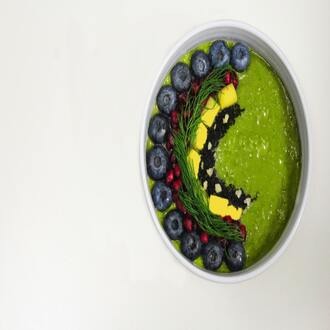Transcription Let's first check the calories.
As we saw in the previous presentation, calorie intake is the first element to be taken into account when we intend to plan a meal or a diet. We explained that this is due to the fact that both deficits and excesses of calories are the elements that most often harm the success of the diet.
In this presentation we will study some aspects that will help us to better understand what calories are and how they intervene in the loss or gain of body weight.
What are calories?
Calories are one of the forms of measurement in which energy is expressed, this unit is normally used in the field of nutrition to reflect the energy value of a food; in most cases, this is expressed in kilocalories or "large calories" or 1000 calories. In the field of nutrition, when speaking of calories, reference is usually made to kilocalories.
The symbol for kilocalories is kcal, which is often seen on food packaging, food preserves, etc. This unit gives us the measure of the amount of energy contained in food in order to be able to prepare diets appropriate to our energy requirements.
In our presentations we will always use kilocalories to reflect the energy values of foods and diets; but we must remember that the international unit of energy is the Joule (J), so little by little its presence on labels will increase and we will need the following equivalence:
- 1 kJ = 0.24 kcal (one kilo Joule is equal to 0.24 kilocalories).
The energy of food
All foods store energy in quantities that vary depending on their composition. For example, one gram of a food rich in fats gives us approximately twice the energy that one gram of a food rich in proteins or carbohydrates would give us.
The following table shows the approximate values of metabolically usable energy provided by foods depending on their composition:
- 1 g of fat provides 9 kcal
- 1 g of protein provides 4 kcal
- 1 g of carbohydrate 4 kcal
We must consider that moderate alcohol consumption (less than 30 grams of ethanol per day) also increases energy levels. Its yield is as follows: 1 g of alcohol provides 7 kcal.
Energy in our body
Energy provided by food is obtained in our organism from the oxidation of carbohydrates, fats, proteins and dietary fiber. This energy constitutes the essential fuel to breathe, to grow, to maintain the temperature, to repair tissues, to walk, to work and so on.
All these functions do not require the same energy expenditure, therefore, all people of the same age, the same sex, the same job, do not demand the same amount of food; even a person throughout his life does not maintain the same energy demand. Daily energy expenditure is different for all people and depends fundamentally on the components that we will study below.
Components of energy expenditure
- Basal metabolic expenditure: This comprises all the energy necessary to maintain the vital functions of the organism (growth, respiration, blood circulation, etc.) under resting conditions. Basal metabolic expenditure represents between 60% and 75% of total energy expenditure. Not all people have the same basal metabolic expenditure as it depends on the amount of metabolically active tissues. Muscle tissues are more metabolically active than adipose tissues. Therefore, basal metabolic expenditure is higher in men of greater physical build and lower in children, women and the elderly.
- Thermogenic effect of food: This includes all the energy necessary to carry out the processes of digestion, absorption and metabolism of the components of the diet. This effect represents between 10% and 15% of the total energy expenditure.
- The type and duration of the physical activity performed: This comprises all the energy demanded by the organism throughout the day to carry out all the necessary activities (walking, working, sports, etc.). This component is the most important for modifying energy expenditure since it varies considerably by modifying the type or duration of physical activities. For example, if you remain seated in front of the TV, the body would need only 130 kilocalories per hour to maintain that activity; however, if instead of watching TV, you decide to ride a bicycle, the body would demand 500 kilocalories per hour to keep you pedaling.
The caloric balance, key piece in the diet.
The balance between energy needs and caloric intake can have three different variants:
- Positive caloric balance: This occurs when the diet provides more calories than the body needs to perform its functions. In this case the body will have all the calories it requires, but there will be calories left over that are stored as a reserve, resulting in weight gain.
- Negative caloric balance: This occurs when the diet provides fewer calories than the body needs to perform its functions. In this case the body has to make use of the body's fat and protein reserves, resulting in a decrease in body weight and malnutrition.
- Neutral caloric balance: This occurs when the diet provides a number of calories very close to the amounts that the body needs to perform its functions. Of course, this balance does not have to be exact on a daily basis; since if in the course of a month, you manage to maintain your body weight stable, your caloric balance is neutral.
For all these reasons we can affirm that the caloric balance is the main element to take into account in the diet to maintain or modify the body weight. For example, if we try to lose weight and we continue ingesting a higher amount of calories than what the body demands, the excess energy will continue to be stored and we will not be able to lose weight.
let s review calories




